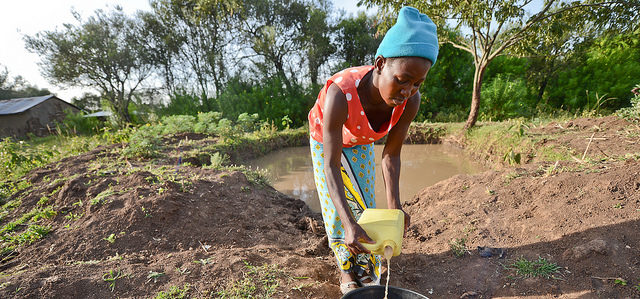The 2015 World Water Week will be held under the theme “Water for Development ‘’ during August 23th – 28th in Stockholm.
2015 is the target year for achieving the Millennium Development Goals (MDGs). Although considerable progress has been made, the targets to achieve improved access to key basic services will not be fully reached. About one billion still live without electricity and go to bed hungry – largely the same underprivileged poor living in rural areas. The challenge remains for the world community in 2015, to formulate, to commit to and to urgently pursue a new set of Sustainable Development Goals (SDGs).
Water is central to all these challenges. Our livelihoods and our food production depend on water. Without it we cannot sustain a productive economy, live healthy lives or produce food, energy and other basic necessities and commodities.
World Water Week in Stockholm will continue to focus on these issues, and the vital role water plays in addressing and highlighting the importance of “water for development” in 2015.
SIANI is one of the conveners and is organizing two important side-events as well as one study visit. If you intend to participate in World Water Week make sure that you book the SIANI events in your calendar.
Water for Food Security and Nutrition
Monday 16:00-17:30
Room FH 307
This side event provides an opportunity to present the findings and recommendations from the High Level Panel of Experts for Food Security and Nutrition (HLPE) report: ‘Water for Food Security and Nutrition’. HLPE is the science-policy interface of the Committee on World Food Security (CFS). HLPE reports provide a basis for multi-stakeholder debates in the CFS. Comments to the report will be provided from representatives of: private sector, civil society, CFS member countries, SIWI, and a perspective on implementation from FAO. A moderated dialogue with the audience is included in the program.
Landscape approaches for sustainable development, water and land resource management
Wednesday 14.00-15.30
FH Congress Hall B
A main driver of rural landscape change is the rapid agricultural expansion and intensification required to satisfy increased food/fiber/feed demands. In the quest to reach effective land management for best possible use of natural resources, landscape approaches are becoming widely used, often in the agriculture and forestry sector. It is used to analyze growing pressures on our natural resources, to identify needs of present and future generations and how these can best be met.
This seminar will provide a platform for discussion on how a holistic landscape approach can be taken when managing land AND water resources jointly to support and serve developing communities.
Get to know Peepoo – the self-sanitizing, biodegradable, household toilet
A study visit about the journey from innovation to mass production and worldwide use of the Peepoo toilet. An innovation developed to provide a safe and sustainable solution to a daunting lack of toilets in densely populated slums. Peepoo is today used in both slums and emergencies around the world.
